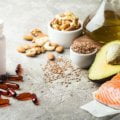Eating healthier can seem tough — ask Sheinelle Jones. The co-anchor of Weekend TODAY and co-host of the 3rd Hour of TODAY made it her New Year’s decision to “devour easy” in 2017, 2018, and (yup) 2019. “It sounds stupid; however, ‘consume easily in approximately 2020’ does not rhyme,” she tells GoodHousekeeping.Com. “I did not want some other year to go by using it and to set a resolution I made years before.” But after trying to reduce carbs, count energy, or even consume keto, she’s, in the end, determined a successful manner to make her decision to eat more mindfully by following a plant-primarily based eating regimen.
She’s now not the best character leaping in on the plant-based totally trend. New cookbooks like Mostly Plants, products like Bonanza chickpea pasta, and meal delivery corporations like Plantable all extol the benefits of eating greater vegetables, beans, fruits, nuts, seeds, and whole grains and make it simpler than ever to accomplish that. But is consuming plant-based, honestly plan ty better for you than keto, paleo, or any of the alternative diets you are currently seeing on Instagram?
“What I love about plant-primarily based diets is that they sell inclusivity over exclusivity and meals that are as close to their original, herbal nation as possible,” says Jaclyn London, MS, RD, CDN, Nutrition Director at the Good Housekeeping Institute. The concept is that the more vegetables you put on your plate, the more likely you are to displace the calories from less nutritious sources. That can be useful for your fitness and weight.”
Here’s everything you want to recognize approximately following a plant-based food regimen:
What are you able to devour on a plant-based, weight-reduction plan?
The definition of a plant-based totally diet can depend on who you ask. Generally, it’s far an ingesting fashion that emphasizes actual, complete ingredients that come from vegetation, along with:
Vegetables: kale, spinach, tomatoes, cauliflower, potatoes, squash, etc.
Whole grains: brown rice, oats, quinoa, barley, etc.
Legumes: peas, chickpeas, lentils, peanuts, beans, etc.
Plant-based protein like tofu or tempeh
Nuts and nut butter
Seeds
Fruits
Plant-based total oils
Spices and herbs
Unsweetened drinks: coffee, tea, sparkling water, and many others.
For Sheinelle, her usual day went something like this:
Breakfast: oatmeal with sliced banana
Lunch: black bean soup
Snack: roasted kale chips with dietary yeast
Dinner: lentil pasta with homemade tomato sauce
What can’t you consume on a plant-primarily based weight loss program?
What you decide to avoid is up to you. For the maximum element, people on plant-primarily based diets consume much less of the subsequent:
Fast Meals
Desserts and sweetened beverages
Refined grains: white rice, white bread, delicate pasta, and many others.
Packaged ingredients: cookies, chips, sugary cereals, and so on.
Processed meats: bacon, sausage, and many others.
But what about meat, seafood, eggs, cheese, and all the one’s different favorites? Sheinelle decided to devour, in most cases, vegan for the primary month. However, she plans to take part in eggs and seafood after the truth, which may nevertheless be relied upon as plant-based.
“I think many people get a little stuck up in the concept of ‘plant-based’ as meaning means vegetarian or vegan, and that’s no longer the case,” London sas. “Plant-based does now not suggest casting off food businesses or lean assets of protein in totality! It’s a good deal friendlier than that.”
She recommends choosing low-fat, unsweetened dairy merchandise and dairy alternatives (like unsweetened soy milk) to get enough potassium, magnesium, and calcium. “These nutrients counterbalance the effects of sodium in the eating regimen and have the impact of minimizing bloat,” London provides. Adding a few kinds of seafood to your plate of veggies can even assist in supplying your body with cognition-boosting omega threes.
It is now not sensible to count on you to never eat or drink something you adore again. “I do not need to live my existence wherein I cannot have a cinnamon roll,” Sheinelle says. “Even if 70consume0 plant-based consufooduppose your body feels a distinction. That’s the type of wherein I am.” Before she attempted her plant-based total weight loss plan.
Sheinelle felt that snacking, especially on the candy stuff, tripped her up, no longer to say all of the free food (pizza!) in the TODAY studio. To make her decision, she enlisted assistance from the meal delivery service Plantable on the advice of her pal. The 28-day plan included selecting her breakfast, typically oatmeal with banana from the office cafeteria and snacks (like trail blend), and then preparing meals for lunch and dinner.
While she found that much fewer prep paintings and shopping made it less difficult to paste to her new plan, the built-in nutrients education from Plantable additionally helped her navigate exceptional situations as they came up. Now that she’s completed her month-long trial, Sheinelle plans to enforce some of the classes she’s learned in her own kitchen and order a few foods from Plantable à l. A. Carte.
However, you do not want to join a meal plan to begin a plant-based total weight loss program. London advises attempting the subsequent first:
Eat more greens more frequently every time you can.
Switch your normal portion sizes for meat and vegetables.
Fill up on a salad or veggie-heavy soup before your most important meal.
Cook with plant-primarily based oils, like olive, canola, sesame, and peanut.
Snack on nuts and seeds for extra fiber and protein.
Sip on unsweetened espresso and tea.
Emphasize real, entire ingredients versus processed ones.
Enjoy goodies and treats as indulgences in smaller amounts.












